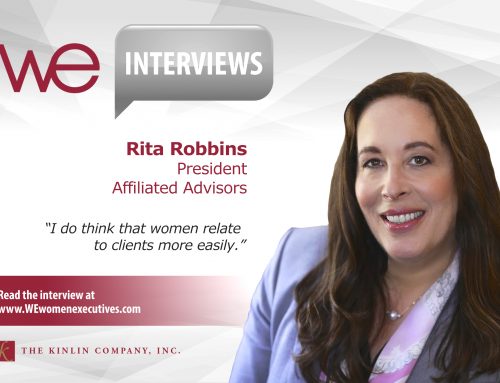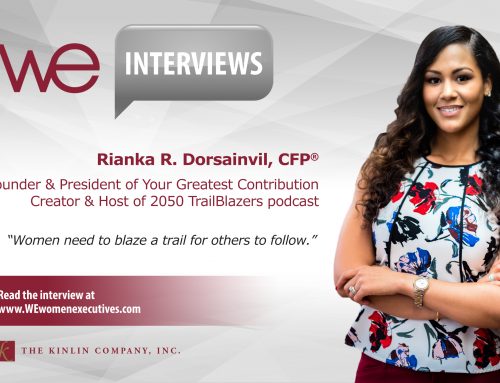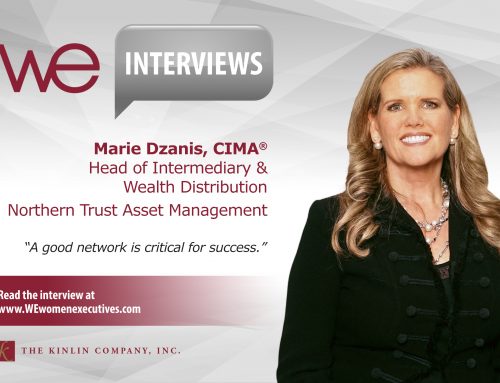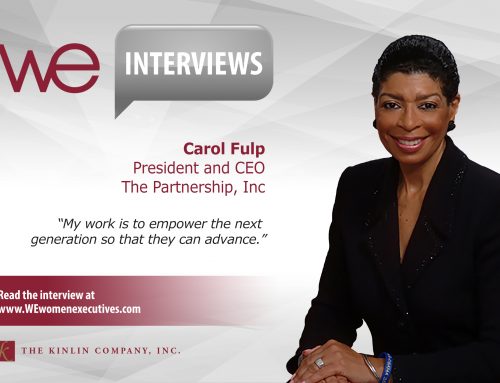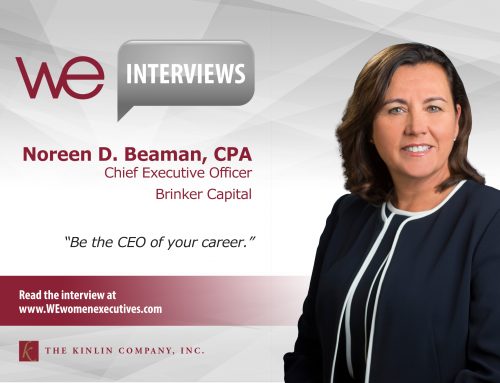Jodi Detjen
Managing Partner, Orange Grove Consulting
Clinical Professor of Management & MBA Program Director, Suffolk University
Ask Jodi Detjen for her job title, and she’ll quickly give you three: Managing Partner at Orange Grove Consulting, Clinical Professor of Management at Suffolk University and MBA Academic Program Director at Suffolk University.
A passionate proponent for gender parity in leadership, Detjen is committed to achieving greater gender balance within organizational hierarchies. I recently sat down with her to talk about the implicit societal biases she battles and her ideas for cultivating a new normal.
A customized solution
I began our conversation with an open-ended request: ‘Tell me what you do at Orange Grove Consulting.’
“Our goal is to achieve gender parity in leadership. We want to see an equal number of men and women across the organizational hierarchy, and we look at the issue from a couple of different perspectives.
“One piece involves the perfection bias that women have been socialized to internalize, i.e., you must be the perfect mother or the perfect worker. We must deal with this issue, because these are internalized assumptions that end up limiting women’s career prospects and their ability to achieve their career goals, which in turn have huge ramifications on the pipeline problem.
“The second thing we look at is organizations themselves and the managerial bias that’s built into the system. Our goal is to identify these biases and make them more visible – in our experience, senior leadership rarely sees the problem because everybody’s busy running the business. So, we talk to organizations and explain that gender inequity is a strategic challenge: fail to leverage all the talent that’s out there and your business isn’t as competitive as it could be. We also point out that if you can become an early adopter organization that offers a good environment for both women and men, you have an opportunity to get the best female talent into your organizations before everybody else wakes up.
“We work with organizations that think strategically about this problem. For example, we say, ‘What is the strategic problem that you’re facing around talent? Where is your problem operationally? Is the problem that people, particularly women, are leaving? Is the problem that women are stuck? Is the problem that all the women leaders are in HR or marketing?’ Then, rather than saying, ‘Here are the 15 things you should implement, regardless of your organization,’ we come up with operational and strategic solutions for the problem. In other words, we approach it from a strategic business perspective, rather than from a corrective HR slant. My business partner Kelly and I both come from management consulting and have extensive operational experience, so we approach problems from that perspective, which I believe is unique.”
Given this high level of customization, I was curious as to how Orange Grove was identifying potential clients. Which departments are you targeting to share word of your offerings, I asked.
“We’ve been struggling with this piece. We have a significant leadership development component to our business, so those inquiries typically come through a company’s learning and development department or Human Resources, because they’re really looking at skill development. We also work directly with managers and employees, and those inquiries come through networking.
“To generate leads for our workshops, we contact the heads of HR departments. And when we’re looking at the strategy side of the business, we’re usually working with an operational leader such as the vice president of operations, a partner in a service firm, or even the CEO.
“Oftentimes, HR is tasked with the tactical side of it, yet sometimes personnel don’t have the power or the influence to handle the strategy pieces, which can be tricky. We’re learning how to navigate this, while at the same time help those HR leaders raise their profile, because they’re frequently pushed into these tactical roles and this initiative could be a way for them to increase their visibility.”
An industry-neutral approach
You’ve indicated that the problem of gender equity is widespread. Do you specialize in a specific industry?
“It’s fascinating that you ask that, because we hired a director of business development approximately 18 months ago, and the first question she asked was, ‘Do we need to focus on a particular industry?’ We responded that our focus is getting more women into leadership, because that’s a problem in every industry.
We’re seeing women at the bottom and the middle of organizations, while at the top, there are few or none. And this is across the board – it doesn’t even matter if you’re in a female-dominated industry such as education or non-profits.
“That being said, gender equity in leadership in the finance — including asset management – real estate and technology industries is particularly imbalanced. What’s happening is that men and women across industries are relatively equal at the start, then the men start moving up while the women start falling back. Yet many within this sector don’t seem to see the inequality. If you survey men and women, the men always say, ‘There’s no problem; we’re a meritocracy,’ and the women always say, ‘Yes, there’s a problem,’ which reinforces our belief that there’s a huge need for our services.”
A B2B focus
Having gained a sense of Orange Grove’s focus, I was curious to learn a bit more about its genesis. When was the Company founded, I inquired.
“We wrote our book – The Orange Line, a Woman’s Guide to Integrating Career, Family, and Life – in 2013, and we spent the first year after that focused on a B2C, direct-to-consumer model. Our idea was to work with women to help them overcome internalized, socialized biases.
“What we found, however, is that women don’t want to pay for this kind of training, because socialized biases also tell them that their career is not supposed to be too important. The tacit message is, ‘If you have a career, great, but don’t be overly ambitious and make it a primary concern, because that’s not lady-like.’ Women will pay for their weekly manicure or their Gucci bag, but they won’t pay $500 to take a workshop to make their career stronger.
“Initially, it was disheartening, but then my business partner and I realized that our strength is B2B rather than B2C, and we decided, ‘Why not leverage that?’ We also discovered that this is a real problem for organizations – they want better leadership and they don’t have it.
“We also wanted to demonstrate that this work is important enough that people will pay for it. Let’s show new paradigms; let’s role model what we’re talking about.’ And so, starting in 2014, that’s what we did, and the business has been growing organically ever since. We’re in the process of hiring a fourth person, and we’re all practically full-time except for me – I teach and do the MBA. We’ve also got at least three adjunct faculty that we bring in as needed as well as other people we can draw upon for larger projects. Altogether, we have a cadre of 8 – 10 highly experienced people we can bring to a project.”
A rejection of the status quo
Having established the size and scope of Orange Grove Consulting, I was curious to know what it was in Jodi’s background that had elicited such a strong interest in gender balance and gender parity. What brought you here, I asked.
“I’ve been a feminist my whole life. For me, it’s a matter of justice and fairness. I have never understood why on earth you would differentiate based on gender. It makes no sense, because I’m not like many of the women that I know, and they’re not like me. There’s such variety in women and men that it seems myopic to even think we are all the same just because of our sex.
“I’ve always been a big advocate for equity, but for many years, I never did anything about it. I’ve always been in consulting. I’ve always done strategy, operations and tech, and now I’m in higher education. I love the people side of it, I love the managing side of it, and I love the strategy side of it.
“After my second child was born, I got the proverbial ‘slap across the face.’ With my first child, everything was fine, I could handle it. Then my second child came, and my husband was travelling for work five days a week, so I was essentially a solo mom working part-time. I was putting in about 25 hours a week and I had a nanny, but I was working under the rules of American motherhood, which say, ‘You’ve got to do it all. You’ve got to look like that perfect woman, you’ve got to be nice, and you can’t raise any issues.’ It practically killed me. There were some dark days, but I clawed my way out of it. Then I met my business partner through a consulting project, and discovered that we had had the same experience. We started to think, ‘What’s going on here? Women aren’t making it to the top, and maybe there’s a relationship, so let’s go out and study it.’ So, we studied it and said, ‘Look what we found! So much of this inequity is occurring because women are holding themselves back. This is new.’ And then we said, ‘Let’s make a business out of this — it will be really fun.’”
A possibility for seismic change
With Detjen’s consulting experience established, I thought it would be interesting to take the conversation in a slightly different direction. You’ve spent the last two decades counseling people – what major changes have you seen in that period? How are you feeling about the pace of change and gender parity now?
“Let me tease it out in two different ways. From a generic leadership perspective, I find that leadership has gotten a lot better in aggregate. Yes, there are outliers, but overall, business leadership has become more transparent and egalitarian. Senior leadership is spreading power and ideas across the organization and evincing a greater willingness to receive feedback and make changes, which I view as incredibly positive.
“Organizations are more effective as well. This is true predominantly in the knowledge worker space and to some degree in manufacturing, though you don’t see it as much on the low-end service side. But when you overlay gender on top of it, there seems to be a mismatch. I’m much less encouraged about the gender equity that we’ve realized. For example, last year I think the number of female CEOs in Fortune 500 companies inched up to 6.4 percent. It’s the best year ever, but 6.4 percent, let’s be honest, that’s nothing. And when you look at the data, it’s barely changed since 2004. You also see bit of a tick back as some of the Millennial women are getting discouraged and thinking, ‘It’s still not possible for me to be in senior leadership and have a family, so forget it.’ They’re not necessarily opting out, but they’re getting frustrated and saying, ‘Okay, whatever.’
“So, I’m very, very mixed. I think we are on the cusp of something that could be huge, and ironically, I believe that it’s the corporations that are going to facilitate this change, because they have a vested interest in keeping talent and utilizing it better. If they don’t, they won’t be able to compete. You’ve got AI and robotics coming down the pike, and there’s no way you’re going to be able to compete in that environment if you’ve got homogeneity in your senior leadership team. There’s no way you can get innovation out of that – it doesn’t work that way. Innovation comes from conflict and friction. Friction is a good thing, though we’ve been taught that it’s a bad thing.
“This is not a fixed pie problem, i.e., if we let more women into senior leadership, there will be fewer men. Just look at what happened in the ‘70s when women showed up at work – the GDP got bigger. If you bring in more talent, you generate more ideas, more products, more services. Your company grows, so there are more managerial positions available. The minute we stop thinking fixed pie, we start looking at the possibilities and it starts exploding. It’s all about mindset.”
A problem of bias
Speaking of mindset, what do you see as some of the common, unconscious biases that women have about themselves, and how do they adversely affect the pipeline?
“The first bias we found is that women are socialized to ‘do it all.’ Whether at work or at home, they’re the ones who are expected to make sure everything gets done.
“The second thing is ‘look good.’ You’ve got to be polished. Everything that comes out of your office must be perfect. The self-talk is ‘I’m not going to show you any faults, because if I do, what I’m really showing you is that I’m not good enough.’ This masks what women are feeling.
“The last unspoken commandment is ‘be nice.’ The thought is, ‘I’m not supposed to get into conflict. Everybody’s supposed to like me, and if I’m really, really good like I was in school, and I follow the directions, I’ll get that A.’ But business doesn’t work that way at all, so these three assumptions are enormously limiting for women. They’re affecting their ability to shine in their careers.
“We’ve been socialized with these ideal women assumptions, and we’ve swallowed it hook, line, and sinker. Watch the Mother’s Day commercials that air in May. What do you see? The woman who has sacrificed so that her children can succeed. Or the commercials that run before the Olympics featuring the sacrificial mother. Once you start seeing it, you realize the message for women is that there’s only one way to be, that motherhood is the number one thing, and that your needs do not matter.
“Recent research done on middle school-age girls revealed that a significant percentage couldn’t even say what their own needs are. For example, if they were asked, ‘Would you like a snack?’ most would respond, ‘Oh, I don’t know, what do you want?’ They couldn’t answer simple questions. This was a contemporary study of adolescent girls, not something that was done 20 years ago.
“This socialization hasn’t changed much at all over the years, though I will say that working mothers and single mothers inoculate their children because they provide a different role model. It’s in traditional families that the problems arise. The mother must make a conscious effort to provide a different role model. If the mother acts like everything she does is supposed to be sacrificial and her needs never matter, then the kids learn that mom’s needs don’t matter as much as their’s or dad’s. The girls learn, ‘This is what I need to do when I grow up,’ and the boys learn ‘This is what I need to marry.’ That’s what we socialize. When mothers change their mindsets to be, ‘Our needs are equal to everybody else’s – not better, but not less,’ then you will see a category change in everything. It has to start there.”
A mistake in perception
Detjen’s comments regarding mindset and prevailing attitudes offered a perfect segue into my next question regarding the concept of a healthy work/life balance. I interview lots of women, many of whom tell me that achieving a healthy balance is a pipe dream. What do you think?
“I totally disagree, and here’s why. I think there are two ways to look at balance. You can view balance as a seesaw, with work on one side and life on the other. Or you can look at balance as solid or grounded, meaning that if a wind comes, I can handle it because I’m balanced.
“I’ll give you an example. A couple of years ago when my kids were teenagers, my husband came home and said, ‘I’m going to start traveling again.’ I said, ‘Well, great, this is going to require me to take on all the family stuff. Now what’s going to happen?’ He responded, ‘I didn’t say you have to take on all the family stuff – I just said I’m going to travel more.’ Then I realized I needed to rethink the situation, and ultimately, we realized that our balance is: my career matters, his career matters and our family matters. Our stability rests on those three legs, and we figure things out as they come. There’s no such thing as a perfect life. I think you can have it all, if you don’t do it all – and you’re open to not having it all be perfect all the time.”


